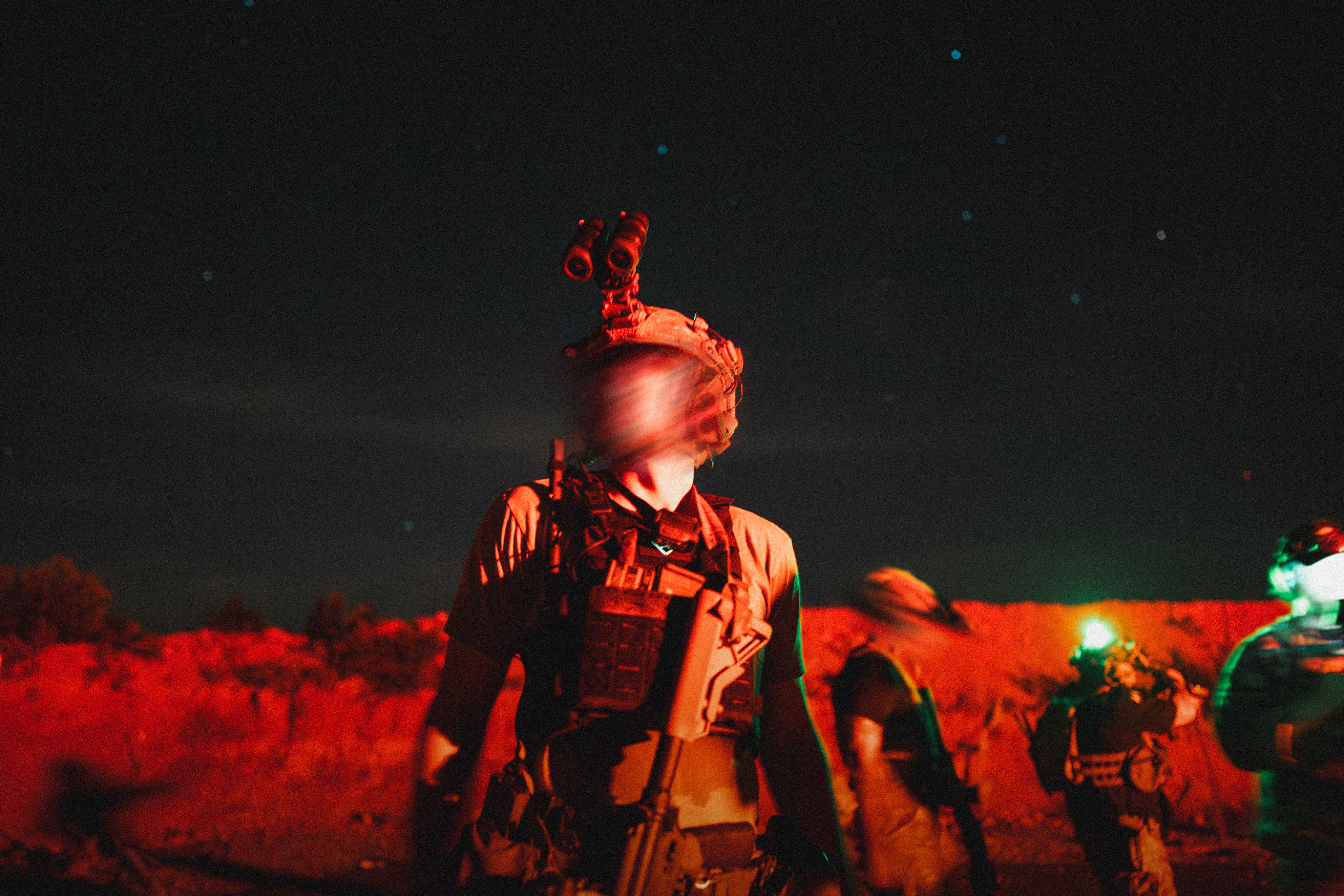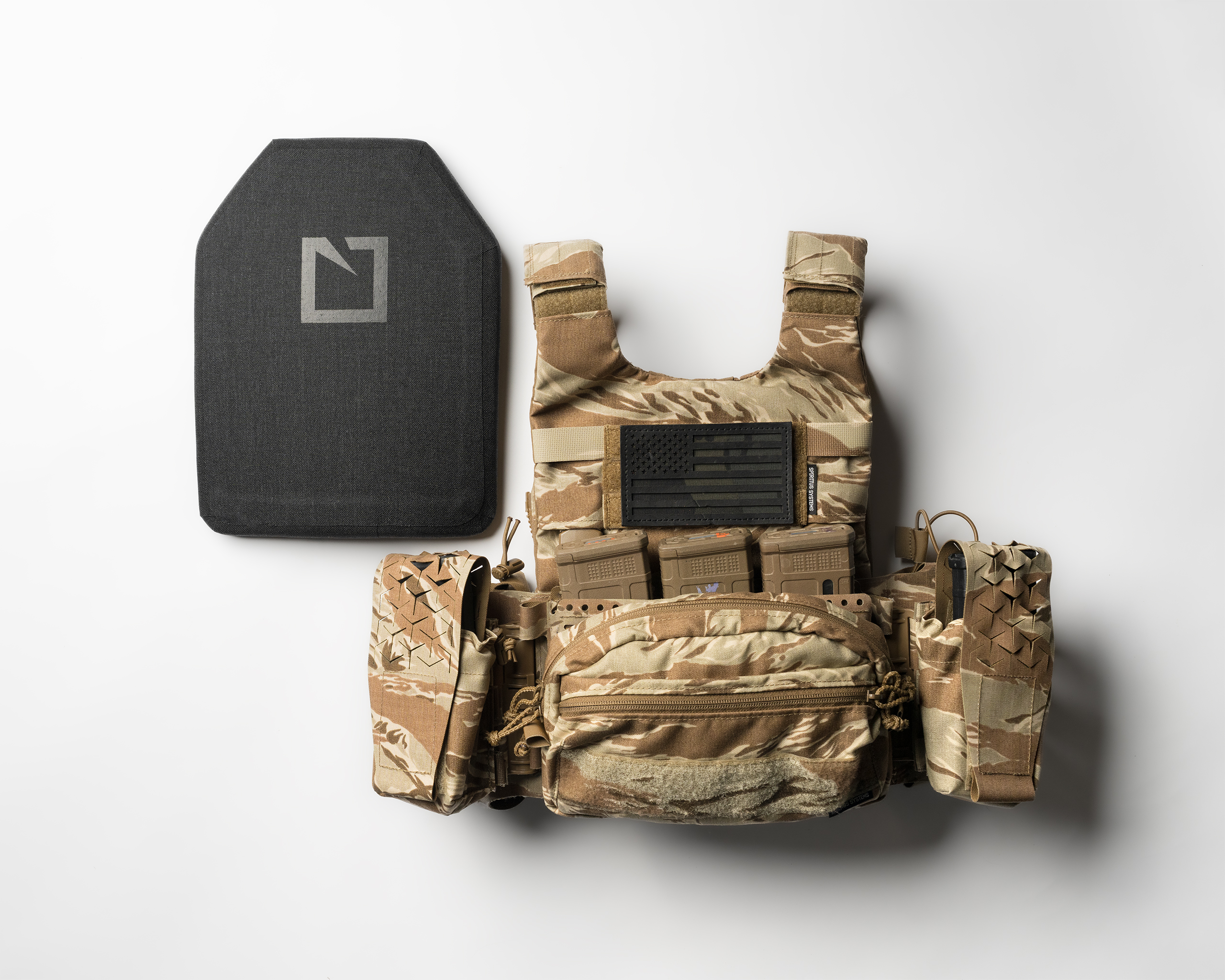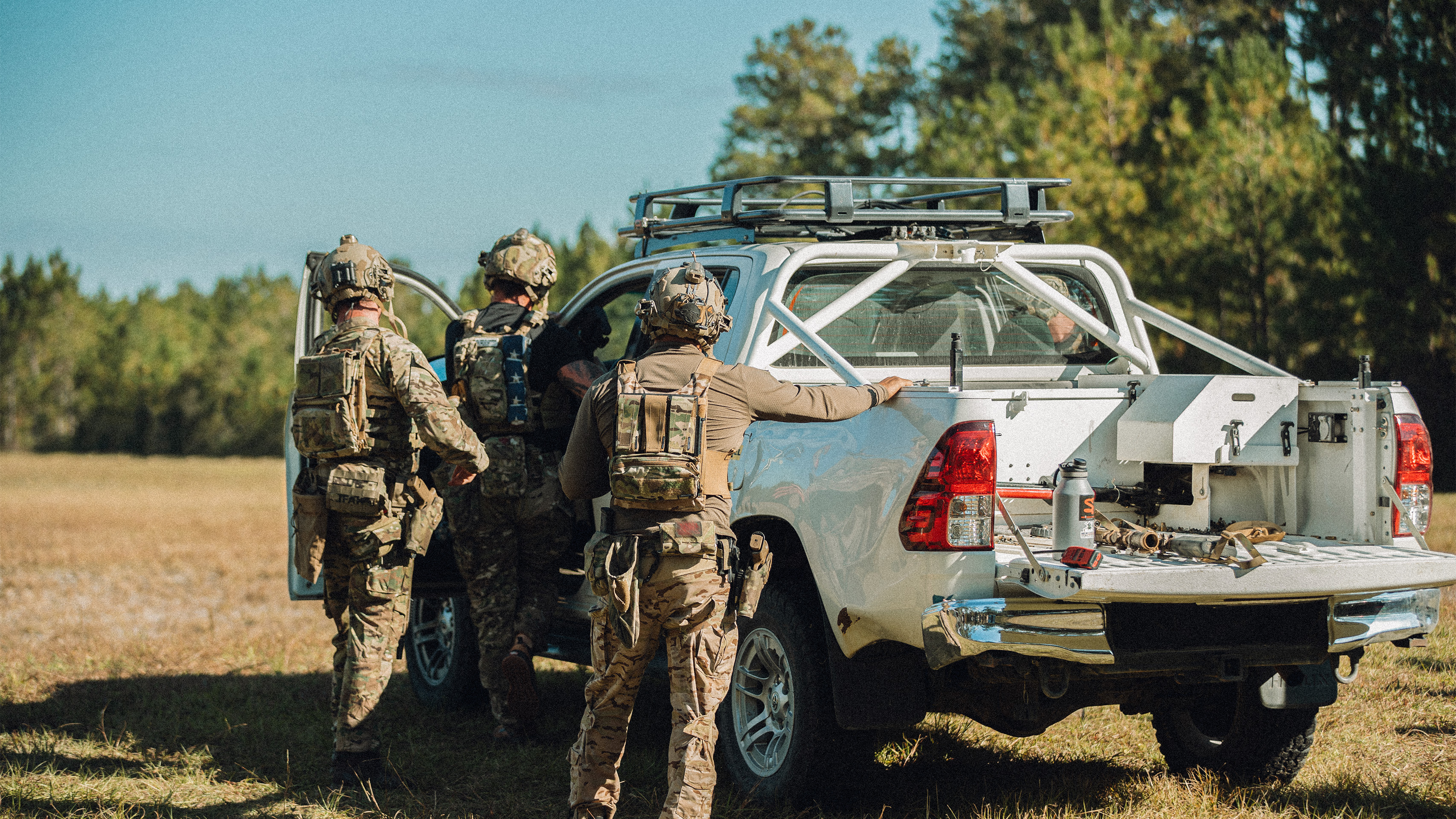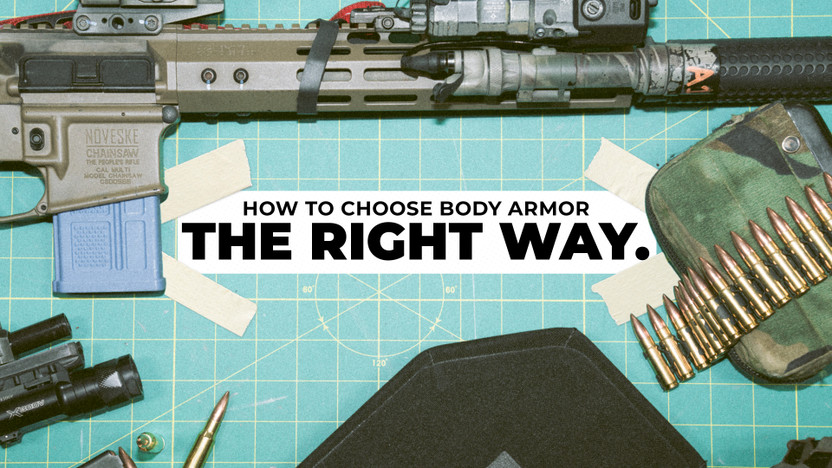How to Choose Body Armor the Right Way
Posted by Spiritus Staff on Apr 29th 2025
How to Choose Body Armor the Right Way
There are some important factors to consider before throwing a set of plates in your cart and hitting checkout. Those include getting the right plate size, the appropriate threat level you need to defeat, how much weight you are comfortable carrying, and how much money you are willing to spend.
The weight and the threat level are going to be the biggest factors in the price. A high threat rating and low price is going to equal more weight. A light plate and high threat rating is going to be more expensive. With that in mind, let’s cover the basics.
What size plate do I need?
Your plate size will correspond to the measurement of your torso, don’t just go off your T-shirt size.
First: measure across your chest, nipple line to nipple line to get the width.
Second: measure from your super sternal notch (the visible dip or indentation located at the base of the neck, between the collarbones) to the top of your belly button.
This is going to give you the length and width you need to select from the available options to give you coverage in those vital areas. Most plates we sell are based off the SAPI size plate, but we also have some shooter cuts which we'll talk about later.
The plate carrier size you need is going to depend on the size of plate. Once you figure out what size plate you need, get the corresponding plate bags to that size. If you need a medium plate, you will need a medium plate bag for your plates. The exception to this can be some of the shooters cut plates. 10x12s, or Large Shooter Cut plates will fit in Spiritus Systems Medium plate bags. Not all manufacturers' plates will fit because they have some variation on the thickness or the other dimensions of the plate that you may have to go up to a large plate bag for it to fit properly.
We do have a limit on the thickness of plates and none of the Hesco plates we sell are beyond that limit, so they will all work in conjunction with the proper plate bag from Spiritus Systems.

What level of threat protection should I get?
This is going to depend on your individual or organizational needs. You need to determine what kind of threats you expect to face and buy the appropriate armor to defeat them.
What are the different levels of protection?
We'll start from the highest and go to the lowest.
Level IV, this is typically the highest standard you're going to see on any hard armor. This threat level is rated to stop one single round of 30-06 AP.
Level III+ is not necessarily a NIJ level
What they're saying, when they give it the Level III+ designation is that it meets NIJ Level III, which we'll talk about in a second, but it's enhanced in that it stops more threats than the standard Level III. With Hesco, you know that it's actually being tested to stop those rounds.
NIJ level III which is the next true level of NIJ standard which is rated to stop M80 Ball. So, .308 rounds, again just Full Metal Jacket .308 is what it's supposed to protect against for NIJ level III. So those are your two current hard armor threat standards.
NIJ Level IIIa is soft armor that is only rated to pistol rounds, it will not stop rifle at all.
Then there's Level II soft armor and Level IIa which is an old standard which you don't see much of anymore.
Why NIJ?
NIJ certification is very important, it's a set of standards that companies can use. They must go to a certified lab to get that testing done. Just taking out plates and shooting them or a company showing a demo of them shooting the plate out in an open field is not the same as NIJ testing standards. It's very specific on temperature control to having a certain type of clay behind the plate to see back face deformation and other things. Don't be fooled by “meets NIJ standards”, if it's not certified in an NIJ lab, it's not actually NIJ rated. There's a list of armor on the NIJ certification list that you can also find online. That's going to determine why some plates are cheaper because they're not truly NIJ certified. To get that certification, a company has to spend a considerable amount of time and money.
Part of the ongoing cost of NIJ certification is that it’s continued testing. They must batch test certain amounts as it’s an on-going audit, it's not a one and done. They can be requested or pulled and sent to a lab periodically to ensure that they still meet that NIJ requirement. If that armor fails to meet that NIJ requirement, there is going to have to be an announcement that those items have to be pulled.
What is a Special Threat plate?
Special threat rating is certified independently. Special threat can mean several different things depending on the company. For Hesco, special threat means rounds that are not covered under NIJ standards. They test independently in a certified lab to show that based off the NIJ standards, the plate will protect against the most prominent round covered under special threat.
M855 or green tip ammo as you've commonly heard it referred to so is a special limited penetration round that is made to go through armor. So, for special threat, typically they will say their plates protect against that. For Hesco, they actually test this in the certified lab. Other places may say that its special threat rated but you don't really know without any testing being done.

Multi-Curve vs Single Curve
Single Curve - A single curve plate such as the L211 just has a single curvature to help it conform to the body. It's not going to curve up towards the bottom or the top. It’s just the center curve to wrap around your body .
Multi-curve – A multi curve plate is going to angle at the top and bottom to better conform than a single curve plate. If you look at them side by side, there is a difference in the angles from the top where the multi-curve is going to conform more to your body with that natural curvature while a Shooters Cut is more straight up and down but they both have that curve in the main part to conform around your body width wise.
SAPI vs Shooters Cut?
SAPI is a sizing guide or plate dimension that is determined by the Department of Defense. If you hear SAPI or E-SAPI what that really means is Enhanced Small Arms Protective Insert or Small Arms Protective Insert. The shape of SAPI plates is a standard that was set by the DOD. Whereas with Shooters Cut there is no governing body and no standard. You’ll also hear the term “Swimmers Cut” or other things like that. An example of a Shooters Cut is the L211, people get confused because it’s a Large Shooters Cut which is a 10x12 plate. So, it's 10 in wide at the maximum point and it's 12 in tall at the maximum height.
Cost Differences.
Moving on to probably the most asked question, “Why is there such a significant cost difference?”. This comes down to the weight and the protection level. The higher the protection level and the lower the weight, the more expensive the plate is going to be. That's typically because of the more expensive material used to achieve this lower weight.
The lower performance of the plate the cheaper it's going to be because it doesn't require as expensive materials. Again, they're kind of a sliding scale of one another. If you have a low protection plate it can be light and inexpensive but typically if it has a high level of protection and low weight, it's going to be expensive. However, there are plates that have a high level of protection but also have a very high weight penalty and they have a lower cost because of the materials that are used.
“Do I need soft armor behind my plates?
The answer is maybe; there are some plates that are ICW or “In Conjunction With”. There are a lot of plates on the market that require soft armor behind them to achieve the advertised threat level. A standalone plate, if advertised, should not require any soft armor behind to defeat the specified threats.
So that again is going to depend on if the plate says ICW. Some ICW plates will achieve a certain threat rating without it, but to get that higher rating you have to have the soft armor behind it. An example of this is there's a lot of that are Level 3 and they'll hit the Level 3 NIJ standard without soft armor behind it, but to hit the special threats such as M855 they require a soft armor backer or for that plate to be worn over personal soft armor.

Does body armor expire?
It's not food, there is no standard for expiration. You know there's a warranty, so with Hesco the warranty is 5 years from the manufacturer date what you see on the label. They will warranty that plate 5 Years from the date of manufacturer. It does not necessarily expire or lose its Integrity. However, wear and tear, dropping the plates, UV exposure, all these things can contribute to the loss of its resistance to bullets because again it's not bullet-proof its bullet resistant.
The expiration is for the warranty period. If you check your plates, you maintain them, you keep UV exposure low, they're in a carrier that's going to protect them, you're not dropping them on concrete, and they do not have a high level of salt exposure, they should last a very long time.
There are ways to check your plates to make sure that the Integrity is still there such as x-raying them and other things, but most people don't have access to an x-ray machine. Again, there's no set expiration that is going to come to the warranty level. Hesco, or whoever manufacturer, is saying from this date of manufacturer for a period of how long they're willing to warranty you the plates against defects or known issues. This doesn't mean that if you dropped the plate it's only been a year and you did something you shouldn't to it that they're going to warranty it because it wasn't a defect.
What armor can I buy from Spiritus Systems?
We sell a range of Hesco plates from the 3810 to the L211s to the U210, 3802C's, 4800s and so forth. Everything that we have available is on our website and is listed under our Armor product category.
We’ve curated a good breadth of armor choices, so you have options as far as what Threat Level you need and how much you're looking to spend. There's an option there from the 4800, which is your highest-level protection at the lightest weight for that level but is also the most expensive. For the cheapest, there is the L211 which is a more affordable special threat plate that's single curve. There is also a full spectrum of options in-between available to you to make sure that you get something that fits your needs.

